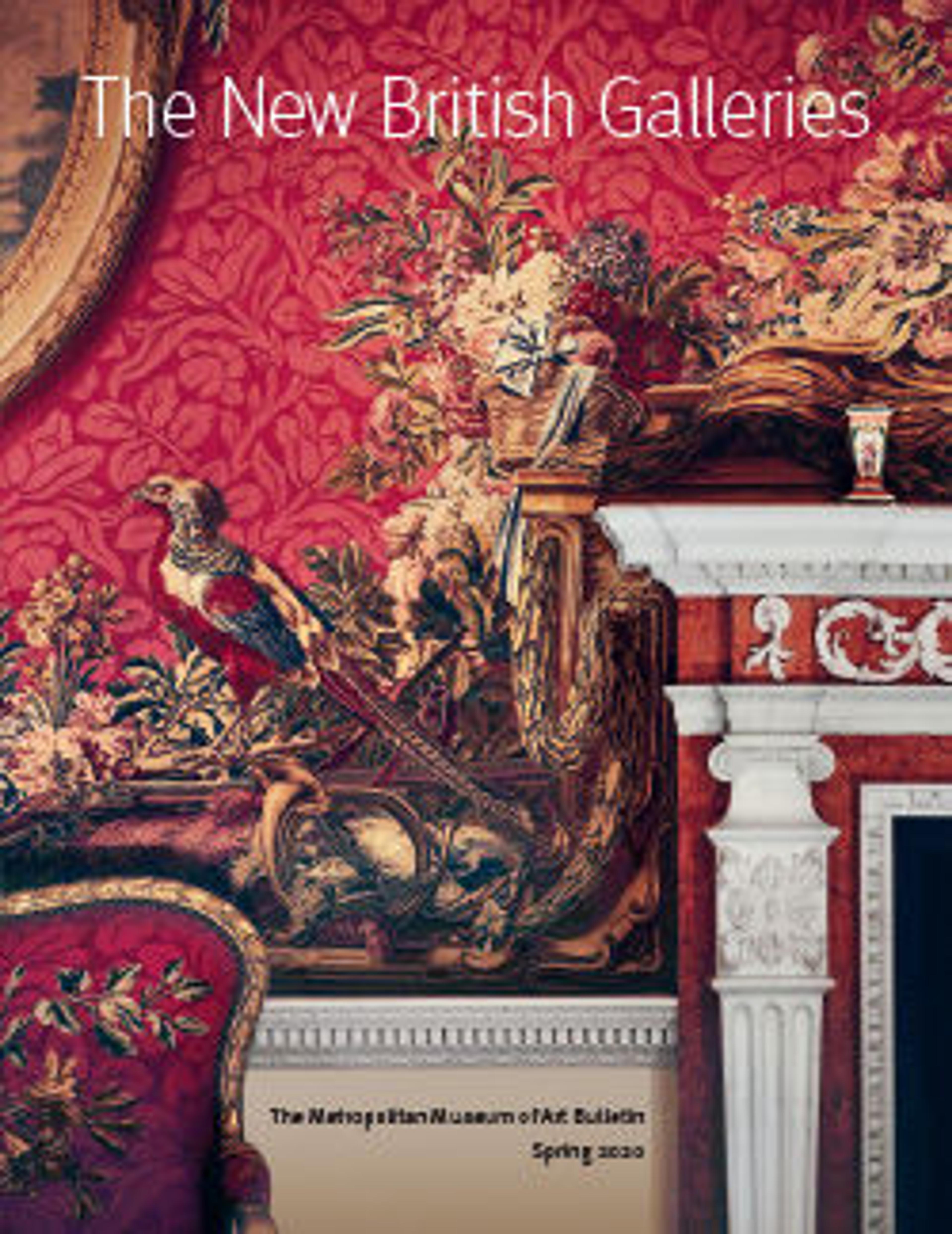Greenery
This tapestry was woven at the Merton Abbey Tapestry Works. William Morris had founded the workshop at Merton, in Surrey, near London, in 1881 as part of his vision to use the integrity of medieval craftsmanship to revitalize the art and design of postindustrial Britain.
Although only woven in 1915, the design for this tapestry was made by John Henry Dearle in 1892, imitating William Morris's style in the trees and that of Philip Webb in the animals. The three riddles, composed by William Morris, give voice to the trees, alluding to the purpose the timber from each would serve after felling: the first, pear-wood, was commonly used for decorative carving; the second, chestnut, was traditionally made into roof rafters; the third, oak, tended to be the lumber of choice for building sailing ships. Greenery unites Victorian sentimentality with the loftier ideals of the Arts and Crafts Movement: Morris founded the Merton Abbey Tapestry Works in 1881 as part of his vision to use the integrity of medieval craftsmanship to revitalize the art and design of postindustrial Britain.
Although only woven in 1915, the design for this tapestry was made by John Henry Dearle in 1892, imitating William Morris's style in the trees and that of Philip Webb in the animals. The three riddles, composed by William Morris, give voice to the trees, alluding to the purpose the timber from each would serve after felling: the first, pear-wood, was commonly used for decorative carving; the second, chestnut, was traditionally made into roof rafters; the third, oak, tended to be the lumber of choice for building sailing ships. Greenery unites Victorian sentimentality with the loftier ideals of the Arts and Crafts Movement: Morris founded the Merton Abbey Tapestry Works in 1881 as part of his vision to use the integrity of medieval craftsmanship to revitalize the art and design of postindustrial Britain.
Artwork Details
- Title:Greenery
- Designer:Designed by John Henry Dearle (British, London 1859–1932 Purley, Surrey)
- Manufactory:Merton Abbey Tapestry Works (British, founded 1881)
- Maker:Morris & Company
- Maker:Woven by John Martin (British, active ca. 1884–after 1915)
- Date:designed 1892; woven 1915
- Culture:British, Merton Abbey
- Medium:Wool, silk (11 warps per inch, 4 per cm.)
- Dimensions:73 1/2 in. × 15 ft. 5 in. (186.7 × 469.9 cm)
- Classification:Textiles-Tapestries
- Credit Line:Purchase, Edward C. Moore Jr. Gift, 1923
- Object Number:23.200a–n
- Curatorial Department: European Sculpture and Decorative Arts
More Artwork
Research Resources
The Met provides unparalleled resources for research and welcomes an international community of students and scholars. The Met's Open Access API is where creators and researchers can connect to the The Met collection. Open Access data and public domain images are available for unrestricted commercial and noncommercial use without permission or fee.
To request images under copyright and other restrictions, please use this Image Request form.
Feedback
We continue to research and examine historical and cultural context for objects in The Met collection. If you have comments or questions about this object record, please contact us using the form below. The Museum looks forward to receiving your comments.
